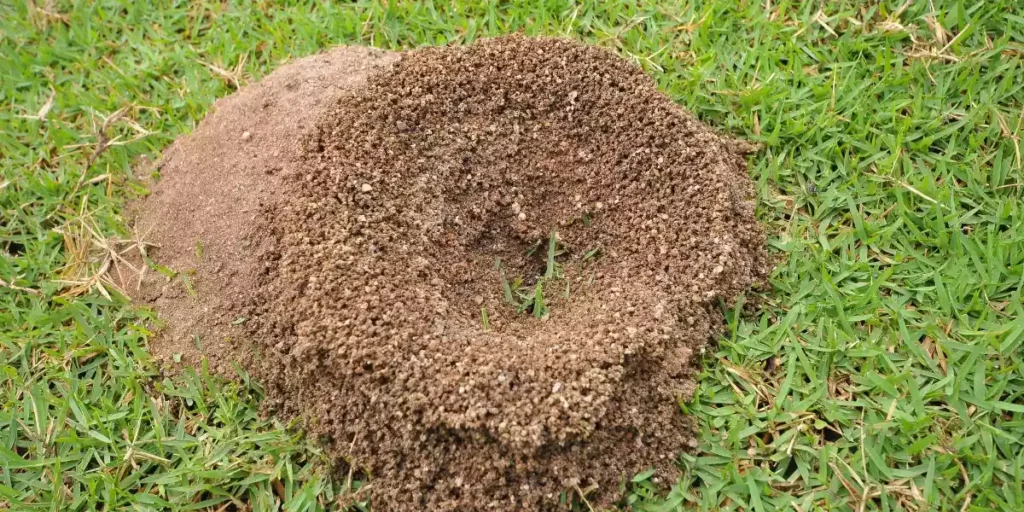Are you looking for an organic and natural way to improve your soil and plant health? Adding worm castings to your soil might be the solution you need. Worm castings are an excellent source of beneficial microbes, humus, and nutrients that work together to create a superfood for your plants.
One of the best things about worm castings is that they are safe and environmentally-friendly. You don’t have to worry about harmful chemicals or synthetic fertilizers damaging your plants or the environment. Plus, adding worm castings to your soil is easy and versatile – you can use them in a potting mixture, as a top dressing, mixed with water to make worm tea, or added to planting holes.
In this article, we will explore how much worm castings to add to soil and why they are a beneficial addition to any garden or potted plant. So, let’s get started!
How much Worm Castings in soil should you use?
You’ll be amazed at how just a little bit of these miraculous organic superfoods can transform your plants into thriving, nutrient-rich powerhouses, leaving you feeling like a green-thumbed gardening superstar.
When it comes to adding worm castings to soil, the amount you should use varies depending on the plant type and growth stage. As a general rule, add 1 part worm castings to 4 parts soil when making a potting mixture. This ratio ensures that the plants receive the necessary nutrients without being overwhelmed by too much organic matter.
It’s important to note that using too much worm castings is not harmful to plants, but it can be a waste of money. Even if worm castings only make up 10% of the soil mixture, the plants will still benefit.
You can use worm castings in a potting mixture, as a top dressing, mixed with water to make worm tea, or added to planting holes. Just remember to add water to activate the beneficial microbes and nutrients in the castings. There’s no hard-and-fast rule for how often to add them to soil.
Can you put too much worm castings in soil?
So you’re wondering if you can put too much worm castings in your soil? It’s a valid concern, as over-fertilizing can harm your plants. While worm castings are known for their gentle and slow-release nature, too much of a good thing can still have negative effects.
In this discussion, we’ll explore whether overusing worm castings can burn your plants and what signs to look out for.
Can you over-fertilize when dealing with worm castings?
It’s important to keep in mind that using too many fertilizers, even the organic kind like worm castings, won’t necessarily result in happier and healthier plants. Over-fertilizing can lead to nutrient imbalances, which can cause harm to plants. Too much nitrogen, for example, can lead to excessive foliage growth at the expense of flowers or fruit.
When using worm castings as a fertilizer, it’s best to follow the recommended guidelines and not exceed the amount needed for the specific plant or soil type. Although worm castings won’t burn plant roots or harm the environment, using too much can be a waste of money and may not provide any additional benefits.
Use them in conjunction with other fertilizers and follow a regular fertilization schedule to ensure optimal plant health and growth.
Can too much worm castings burn plants?
Using excessive amounts of worm castings can actually harm your plants by causing them to become burned and damaged. Although worm castings are a natural fertilizer and cannot burn plants like chemical fertilizers can, too much of a good thing can still be detrimental.
Worm castings contain high amounts of nitrogen, which is essential for plant growth, but too much nitrogen can cause the leaves to turn yellow and become scorched. It’s important to follow the recommended guidelines for adding worm castings to your soil.
Typically, adding 10-20% worm castings to your soil mixture is sufficient for providing your plants with the necessary nutrients and microorganisms they need to thrive. If you’re unsure about how much to use, start with a smaller amount and gradually increase as needed.
Remember, adding too much worm castings can be a waste of money and potentially harm your plants, so it’s always better to err on the side of caution.
What percentage of worm castings should be in soil?
To maximize the benefits of worm castings, you’ll want to ensure that they make up at least 10% of your soil mixture, providing your plants with the crucial micronutrients and microorganisms they need to thrive. While using more won’t harm your plants, it can be a waste of money.
It’s important to note that worm castings are not meant to replace fertilizers, as they lack certain nutrients. Instead, they should be used in conjunction with other fertilizers to provide a well-rounded nutrient profile for your plants.
When adding worm castings to your soil, it’s important to consider the type of plant you’re growing and its growth stage. The amount of worm castings needed varies depending on these factors. However, a good rule of thumb is to mix 1 part worm castings with 4 parts soil when making a potting mixture.
Whether you’re using them as a top dressing, mixing them with water to make worm tea, or adding them to planting holes, adding water is necessary for them to work their magic. By incorporating worm castings into your soil mixture, you’ll be able to promote overall plant health and improve soil conditions, making it a valuable addition to any gardening routine.
Can you overdo worm castings?
Don’t make the mistake of going overboard with worm castings – too much can be wasteful and unnecessary for your plants’ needs. While worm castings are a fantastic addition to any soil mixture, adding too much can be counterproductive.
Not only will it not benefit your plants any further, but it can also be a waste of money. The recommended amount of worm castings to add to soil is about 10% of the mixture. This means that for every four parts of soil, you only need one part of worm castings.
If you go over this amount, the excess castings can create a buildup of nutrients that can potentially harm your plants. So, be careful not to overdo it and always follow the recommended guidelines.
Do Worm Castings help soil?
Worm castings work wonders for your garden, nourishing the earth beneath your feet and promoting healthy plant growth. When added to soil, they improve soil conditions and structure, providing beneficial microbes, organic matter, and preventing nutrient leaching.
This means that your plants will have access to essential nutrients and microorganisms that they need to grow and thrive. Additionally, worm castings are 100% organic and natural, making them a great choice for those who want to avoid harmful chemicals.
They also can’t burn plant roots, making them safe to use in any amount. Whether you add worm castings to your potting mixture, use them as a top dressing, or mix them with water to make worm tea, they are sure to benefit your plants and improve overall soil health.
So, go ahead and add some worm castings to your garden today and watch your plants flourish!
Are worm castings better than fertilizer?
You may be wondering if using worm castings exclusively is a better option than relying on fertilizers, but it’s important to note that while worm castings offer many benefits, they aren’t meant to replace other fertilizers. This is because certain nutrients may be lacking in worm castings.
Worm castings contain a range of micronutrients and microorganisms that aren’t found in traditional fertilizers, which can improve soil health and promote overall plant growth. However, they may not provide enough nitrogen, phosphorus, and potassium, which are essential nutrients that plants need in larger quantities.
Using a combination of worm castings and fertilizers can provide the best of both worlds and ensure that your plants are getting all the nutrients they need. Worm castings can help improve soil structure, add organic matter, and prevent nutrient leaching, while fertilizers can provide the necessary macronutrients to support plant growth.
By using both in conjunction, you can ensure that your plants are receiving a well-rounded diet and are thriving in a healthy soil environment.
How should you add worm castings to soil?
One way to get the most out of your worm castings is to mix them with soil in a potting mixture, and you’ll be amazed at how your plants will benefit from the added nutrients and microorganisms. When making a potting mixture, add 1 part worm castings to 4 parts soil. The amount of worm castings needed varies depending on the plant type and growth stage, but even if they only make up 10% of the soil mixture, your plants will still benefit.
Worm castings can also be used as a top dressing, mixed with water to make worm tea, or added to planting holes. However, adding water is necessary for them to work their magic.
There’s no hard-and-fast rule for how often to add worm castings to soil, but it’s recommended to do so at least once a year. Potted plants, which are more susceptible to pests and diseases, can benefit greatly from the addition of worm castings.
Is diluting worm castings necessary?
Don’t miss out on the full potential of your plants – diluting worm castings may seem like an extra step, but it’s essential for unlocking their powerful benefits.
When worm castings are too concentrated, they can actually harm your plants by suffocating their roots and preventing proper water absorption. Diluting your worm castings with water helps to prevent this issue and ensures that your plants receive the perfect amount of nutrients.
To dilute your worm castings, mix one part castings with three to four parts water. This will create a nutrient-rich liquid that can be used to water your plants or added to the soil.
Diluted worm castings are especially useful for seedlings or young plants, as they provide a gentle boost of nutrients without overwhelming their delicate systems. Plus, diluting your worm castings also helps to stretch them further, so you can get more use out of each batch.
How often should you add worm castings to soil?
Get the most out of your plants and keep them healthy by knowing how frequently to incorporate worm castings into your gardening routine.
While there’s no hard-and-fast rule for how often to add worm castings to soil, it’s generally recommended to add them once or twice a year for outdoor plants and every three to four months for indoor plants.
The frequency of adding worm castings will also depend on the growth stage of your plants. During the early stages of growth, it’s best to add worm castings more frequently to give your plants a healthy start.
As your plants mature, you can reduce the frequency of adding worm castings. Remember, adding too much worm castings isn’t harmful to your plants, but it can be a waste of money.
So, use them wisely and enjoy the benefits of their superfood-like properties.
Conclusion
So, there you have it! Adding worm castings to your soil is a great way to improve plant health and soil conditions.
Remember, there’s no hard-and-fast rule for how often to add them to soil, but using them in a potting mixture, as a top dressing, mixed with water to make worm tea, or added to planting holes can all be effective methods.
While it’s important to use the right amount of worm castings, don’t be afraid to experiment and see what works best for your plants. With their beneficial microbes, humus, and nutrients, worm castings are a superfood for plants and a safe and environmentally-friendly option.
So, go ahead and try adding some to your soil – your plants will thank you!




